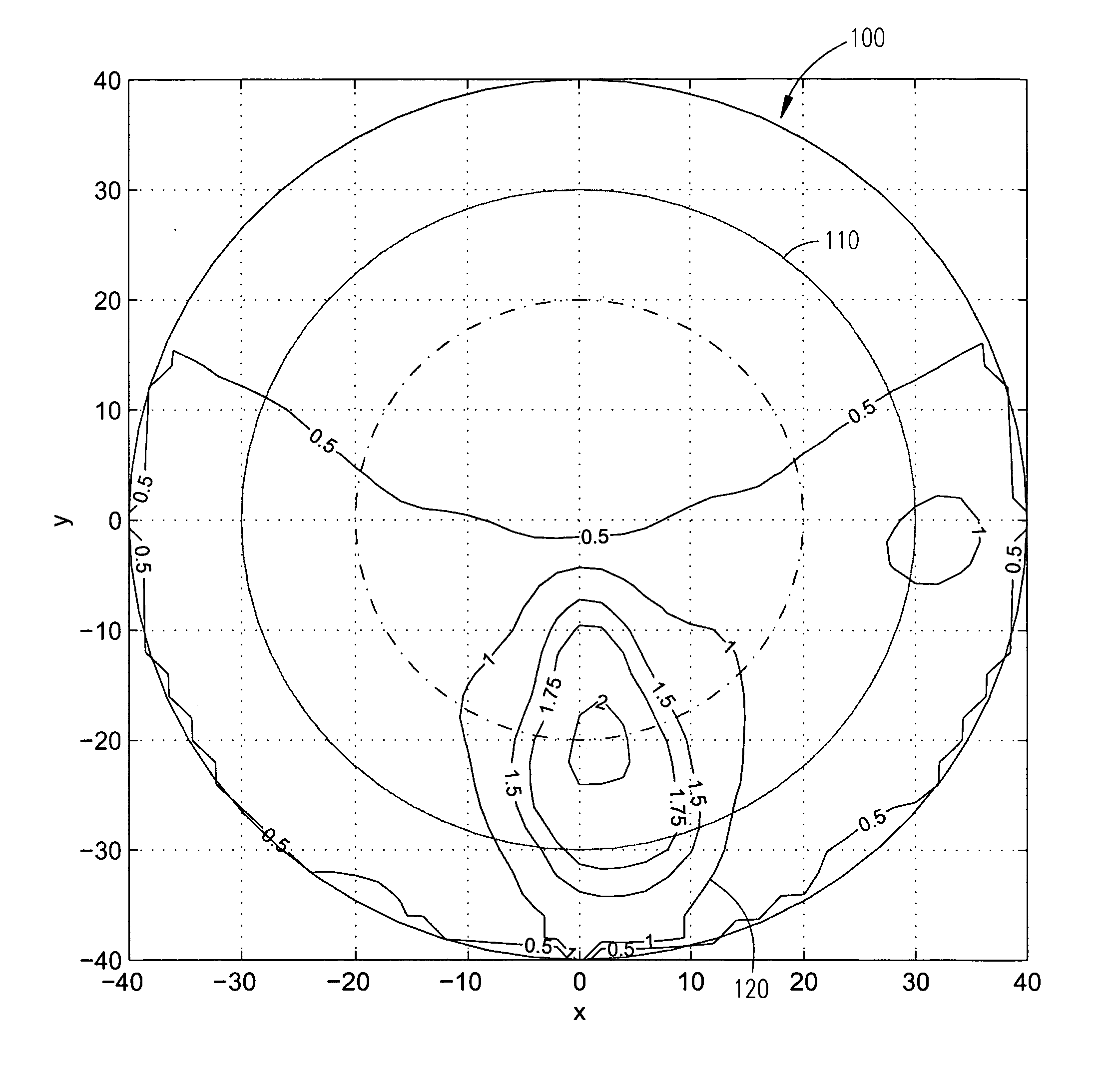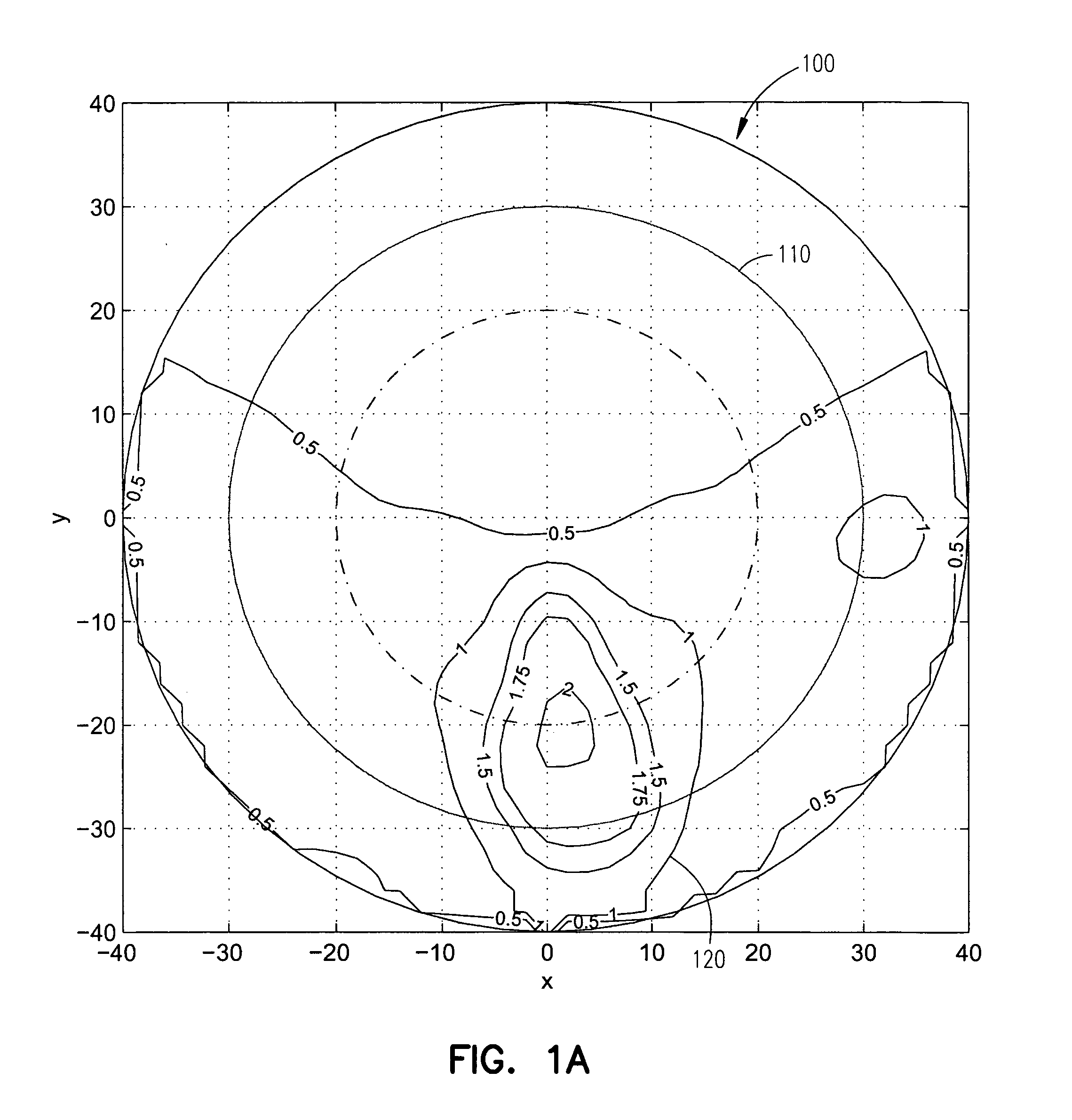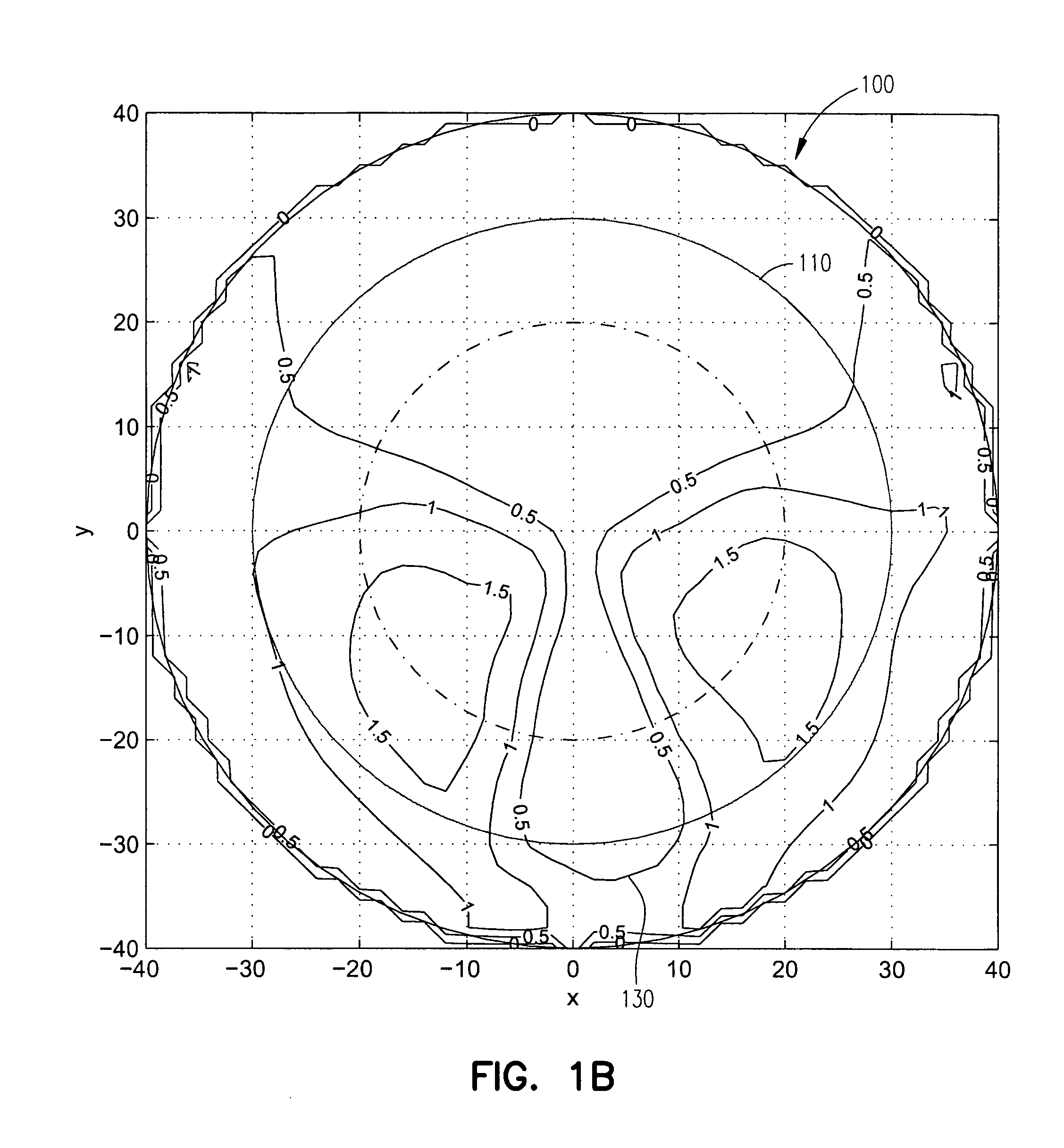Multifocal optical device design
a multi-focal, optical device technology, applied in the direction of design optimisation/simulation, instruments, spectacles/goggles, etc., can solve the problems of low astigmatism control, distortion and color fringing, and high astigmatism level, so as to reduce computation time and achieve accurate powers.
- Summary
- Abstract
- Description
- Claims
- Application Information
AI Technical Summary
Benefits of technology
Problems solved by technology
Method used
Image
Examples
Embodiment Construction
Progressive Correction
FIG. 1 shows an example ophthalmic progressive addition lens (PAL) 100 inside an edge 110. This lens typifies designs made with our procedure, although other optical devices can be produced in a similar manner. The coordinate axes denote millimeters from the center of the lens. FIG. 1A includes contour lines 120 having constant optical power. The mean power of an optical surface at a point x,y is proportional to the sum of the curvatures in two perpendicular directions at that point; the mean curvature is defined as H(x,y)=(k1(x,y)+k2(x,y)) / 2. In the example lens 100, the add power is 0.00 diopter in the far-view upper part of the lens. The near-view add power is 2.0 diopters in the bottom center of the lens. (“Add power” is the power that must be added to the far-view power to obtain the desired near-view power; in this example, the base or far-view power is 4.94.) A vertical corridor between the near-view and far-view portions has powers intermediate the two...
PUM
 Login to View More
Login to View More Abstract
Description
Claims
Application Information
 Login to View More
Login to View More - R&D
- Intellectual Property
- Life Sciences
- Materials
- Tech Scout
- Unparalleled Data Quality
- Higher Quality Content
- 60% Fewer Hallucinations
Browse by: Latest US Patents, China's latest patents, Technical Efficacy Thesaurus, Application Domain, Technology Topic, Popular Technical Reports.
© 2025 PatSnap. All rights reserved.Legal|Privacy policy|Modern Slavery Act Transparency Statement|Sitemap|About US| Contact US: help@patsnap.com



